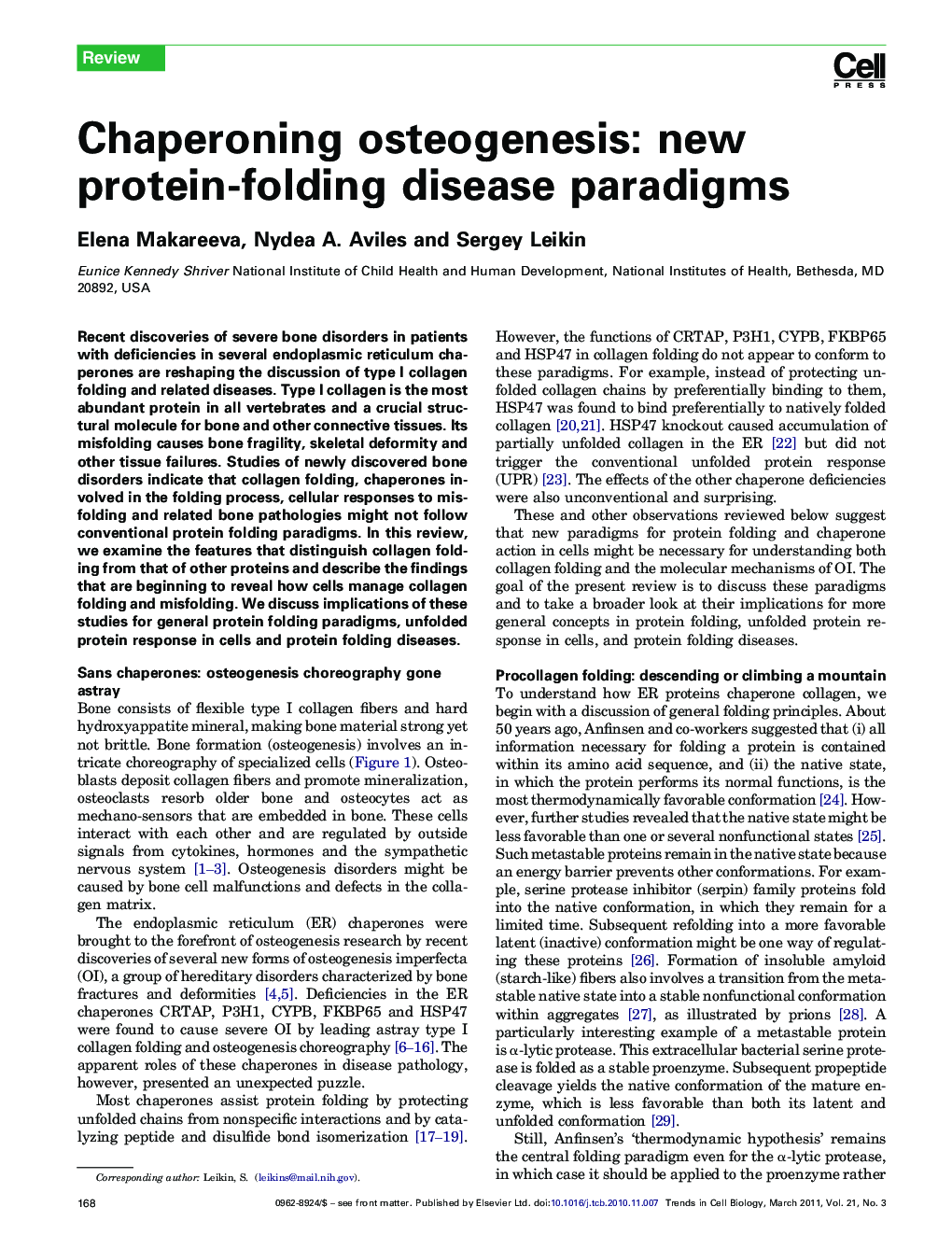| Article ID | Journal | Published Year | Pages | File Type |
|---|---|---|---|---|
| 2204726 | Trends in Cell Biology | 2011 | 9 Pages |
Recent discoveries of severe bone disorders in patients with deficiencies in several endoplasmic reticulum chaperones are reshaping the discussion of type I collagen folding and related diseases. Type I collagen is the most abundant protein in all vertebrates and a crucial structural molecule for bone and other connective tissues. Its misfolding causes bone fragility, skeletal deformity and other tissue failures. Studies of newly discovered bone disorders indicate that collagen folding, chaperones involved in the folding process, cellular responses to misfolding and related bone pathologies might not follow conventional protein folding paradigms. In this review, we examine the features that distinguish collagen folding from that of other proteins and describe the findings that are beginning to reveal how cells manage collagen folding and misfolding. We discuss implications of these studies for general protein folding paradigms, unfolded protein response in cells and protein folding diseases.
